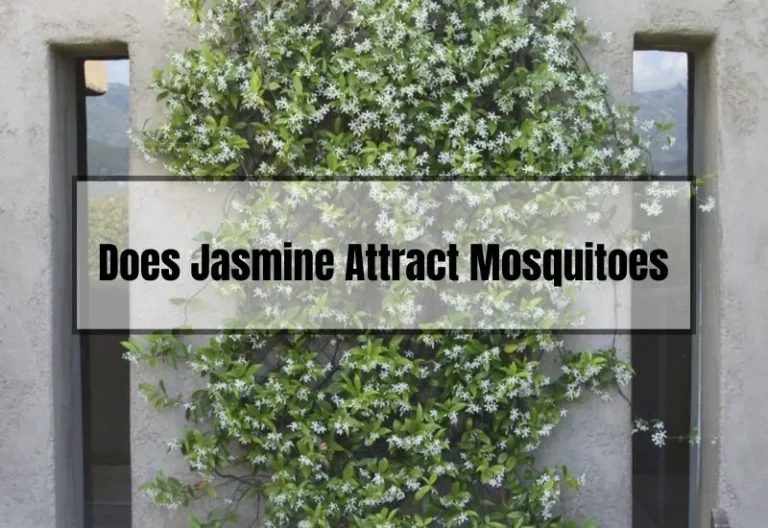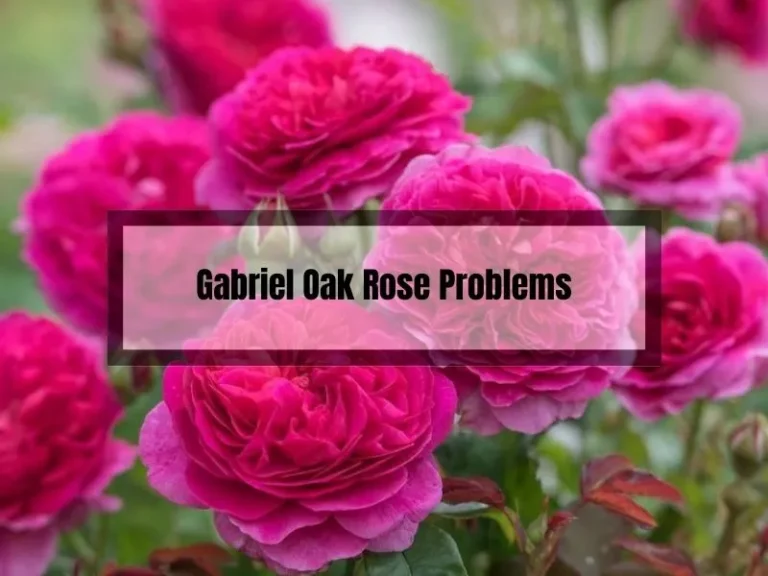Leucophyllum Candidum: A Comprehensive Guide to Growing Texas Sage
From Louise: Passionate about gardening, I specialize in plant care and flower knowledge. I’m here to share my expertise and assist with your gardening queries. Feel free to ask any questions or seek advice on lawn care—I’ll respond within 24 hours!
If you’re in search of a drought-tolerant plant that can add a pop of color to your garden, Leucophyllum Candidum might be the perfect choice. This evergreen shrub, also known as Violet Silverleaf or Texas Sage, is native to the Chihuahuan Desert and can thrive in hot, dry conditions. Its silvery leaves and purple flowers make it a striking addition to any landscape.
Caring for Leucophyllum Candidum is relatively easy. It prefers full sun and well-draining soil, and it doesn’t require much water once established. Pruning can help keep the plant compact and promote more blooms.
While it’s generally a low-maintenance plant, there are a few common issues to watch out for, such as root rot and spider mites. However, with proper care, Leucophyllum Candidum can be a beautiful and hardy addition to your garden.
Key Takeaways
- Leucophyllum Candidum is a drought-tolerant, evergreen shrub with silvery leaves and purple flowers.
- It thrives in hot, dry conditions and is relatively low-maintenance.
- Common issues to watch out for include root rot and spider mites, but with proper care, it can be a beautiful addition to your garden.

Leucophyllum Candidum
If you’re looking for a drought-tolerant shrub that can add a pop of color to your garden, Leucophyllum Candidum, also known as Violet Silverleaf, is a great choice. This plant is native to the Chihuahuan Desert, which spans parts of Mexico, Texas, New Mexico, and Arizona.
Origins and Habitat
Leucophyllum Candidum is a small, compact shrub that can be found growing in rocky, well-drained soil in arroyos, on hillsides, and in other dry, desert habitats. This plant is native to the Chihuahuan Desert and can withstand hot and dry conditions.
Plant Characteristics
Leucophyllum Candidum is a slow-growing shrub that typically reaches a height of three feet. It has silvery, almost white leaves that contrast beautifully with its vibrant violet flowers, which bloom in response to humidity or rainfall.
This plant prefers full or reflected sun and requires very little water once established. It is also important to note that it prefers alkaline soil and must have well-drained soil to avoid root rot.
Here are some other characteristics of this stunning plant:
- Hardiness: 10°F
- Water: Very low
- Growth Rate: Moderate
- Mature Height: 3 feet
Leucophyllum Candidum is a great choice for xeriscaping and is a low-maintenance plant. However, it is shade intolerant and should be planted in full sun.
Growth and Care
Growing and caring for Leucophyllum candidum is relatively easy, provided you give it the right conditions. Here are some tips to help you grow and care for this beautiful plant:
Planting
To plant Leucophyllum candidum, choose a spot that receives at least six hours of direct sunlight each day. The plant prefers well-draining soil, preferably alkaline soil. It is best to plant it in the spring, summer, or autumn.
Watering
Leucophyllum candidum is a drought-resistant plant, so it does not require much watering. Water it only when the soil is dry to the touch, and do not overwater it. Overwatering can lead to root rot and other problems.
Pruning
Prune Leucophyllum candidum regularly to maintain its shape and size. You can prune it after it has finished blooming, or in the early spring before new growth appears. This fast-growing plant can grow up to five feet high and wide.
Fertilizing
Leucophyllum candidum does not require much fertilizing. You can fertilize it once a year in the spring with a slow-release fertilizer. Be careful not to over-fertilize, as this can lead to excessive growth and weak stems.
Pests and Diseases
Leucophyllum candidum is generally a hardy plant that is resistant to pests and diseases. However, it can be susceptible to root rot if it is overwatered. Watch out for signs of root rot, such as wilting leaves, yellowing leaves, and a foul odor.
With these simple tips, you can enjoy the beauty of Leucophyllum candidum in your own garden.
Related Posts:
- How to Improve Lawn Soil Naturally: Expert Tips and Methods
- Overwatering Houseplants: How to Avoid Killing Your Plants
- How to Keep Outdoor Plants Alive During Hot Summer Months
Leucophyllum candidum is one of my favorite plants to grow. It is easy to care for and adds a beautiful touch to any garden. I have found that planting it in well-draining soil and giving it plenty of sunlight is the key to its success. I also make sure not to overwater it and prune it regularly to maintain its shape. With these simple tips, you can enjoy the beauty of Leucophyllum candidum in your own garden.
What are some common uses for Leucophyllum Candidum?
Landscaping
Leucophyllum Candidum is a popular choice for landscaping due to its attractive silvery foliage and showy violet flowers.
It is often used as a hedge, border, or accent plant in xeriscapes, rock gardens, and other water-wise landscapes. You can also prune it into a variety of shapes and sizes to fit any design.
Medicinal Uses
Leucophyllum Candidum has been used for centuries by Native Americans for its medicinal properties. The leaves and stems of the plant are believed to have antifungal, antibacterial, and anti-inflammatory properties.
You can brew them into a tea or use them topically to treat a variety of ailments, including skin infections, sore throats, and digestive issues.
Wildlife Habitat
Leucophyllum Candidum is an important plant for wildlife habitat. The shrub provides shelter and nesting sites for birds and other small animals.
Its flowers are a source of nectar for bees, butterflies, and other pollinators. The plant’s seeds are also eaten by birds and other animals.
Soil Stabilization
Leucophyllum Candidum is a hardy plant that can grow in poor soil conditions. Its deep roots help to stabilize soil, preventing erosion and protecting against landslides. This makes it a valuable plant for erosion control and reclamation projects.
Water Conservation
Leucophyllum Candidum is a drought-tolerant plant that requires very little water once established. This makes it an ideal plant for water-wise landscapes and for areas with limited water resources.
Its ability to thrive in arid conditions also makes it a valuable plant for regions affected by drought or water scarcity.
Common Issues
Root Rot
One of the most common issues with Leucophyllum candidum is root rot. This occurs when the soil is poorly drained, and the roots become waterlogged.
To prevent root rot, make sure the soil is well-draining and avoid overwatering the plant. If you suspect root rot, remove any affected roots and replant in fresh soil. For more information on root rot, check out this guide on identifying and treating root rot in plants.
Pests
Leucophyllum candidum is generally resistant to pests, but it can occasionally be infested by spider mites or whiteflies.
These pests can be controlled with insecticidal soap or neem oil. Be sure to follow the instructions on the product label.
Pruning
Leucophyllum candidum requires minimal pruning, but it is important to prune it properly to maintain its shape and promote healthy growth.
Prune in late winter or early spring before new growth appears. Only remove dead or damaged branches, and avoid pruning more than one-third of the plant at a time.
Winter Damage
Leucophyllum candidum is a hardy plant, but it can still be damaged by extreme cold. If you live in an area with harsh winters, protect the plant by covering it with a frost blanket or moving it to a sheltered location.
Fertilization
Leucophyllum candidum does not require heavy fertilization, but it can benefit from a light application of a balanced fertilizer in the spring.
Be sure to follow the instructions on the product label and avoid over-fertilizing, which can lead to excessive growth and reduced flowering.
Can Leucophyllum Candidum Be Grown Indoors?
Growing Leucophyllum candidum indoors is possible, but it is not recommended due to its preference for hot and dry conditions. If you decide to grow it indoors, it is important to provide it with a lot of light and ensure that the temperature is warm enough.
To do so, place the plant near a window that receives a lot of sunlight or consider using grow lights to provide additional light. It is also important to use a pot with drainage holes to ensure that the soil is well-draining.
Keep in mind that this plant prefers alkaline soil and must have well-drained soil to avoid root rot.
What Other Plants Pair Well with Leucophyllum Candidum?
Leucophyllum candidum is a beautiful plant that can add a lot of visual interest to your garden. If you are looking for other plants to pair with it, here are a few suggestions:
- Agave: Agave is a succulent that is native to the Americas. It pairs well with Leucophyllum candidum because it also thrives in hot and dry conditions.
- Yucca: Yucca is another plant that is native to the Americas. It has long, spiky leaves that complement the silvery foliage of Leucophyllum candidum.
- Lantana: Lantana is a colorful flowering plant that can add a pop of color to your garden. It pairs well with Leucophyllum candidum because it also thrives in hot and dry conditions.
- Mexican feather grass: Mexican feather grass is a beautiful ornamental grass that can add texture and movement to your garden. It pairs well with Leucophyllum candidum because it also thrives in hot and dry conditions.
When planting Leucophyllum candidum with other plants, make sure that you choose plants that have similar growing requirements. This will ensure that all of the plants in your garden thrive and look their best.
Is Leucophyllum Candidum Pet Safe?
As a pet owner, it’s essential to ensure that your furry friend stays healthy and safe. If you’re planning to add the Leucophyllum Candidum plant to your home, you might be wondering if it’s safe for your pets. Here’s what you need to know:
Toxicity
According to the ASPCA, Leucophyllum Candidum is toxic to dogs, cats, and horses. The plant contains a toxic compound that can cause vomiting, diarrhea, depression, and anorexia in pets. If your pet ingests any part of the plant, it’s essential to seek veterinary care immediately.
Symptoms of Poisoning
If your pet has ingested Leucophyllum Candidum, they may experience the following symptoms:
- Vomiting
- Diarrhea
- Depression
- Anorexia
- Occasionally bloody diarrhea or vomiting
Prevention
To keep your pets safe, it’s best to avoid planting Leucophyllum Candidum in your home or garden. If you already have the plant, make sure to keep it out of reach of your pets. You can also consider using a pet-friendly alternative, such as the Spider Plant or Fiddle Leaf Fig.
I once had a friend who planted Leucophyllum Candidum in her garden, not knowing that it was toxic to her dog. Her dog became ill after ingesting a part of the plant, and she had to rush him to the vet. It was a scary experience for her and her furry friend, and she regretted not doing her research before planting the plant.
Frequently Asked Questions (FAQs)
What are some related species to Leucophyllum Candidum?
Leucophyllum candidum is related to the more common Leucophyllum frutescens, but it is smaller, more compact, and has even more silvery, almost white, leaves. Another related species is Leucophyllum zygophyllum, which has pink flowers and is native to Mexico.
What is the growth rate of Leucophyllum Candidum?
In optimal conditions, Leucophyllum candidum has a medium growth rate, typically reaching a height of 2-3 feet and a spread of 4-6 feet in 3-5 years.
What are the best growing conditions for Leucophyllum Candidum?
Leucophyllum candidum prefers full sun and well-draining soil with a pH of 7.0-8.5. It can tolerate heat and drought, but it is susceptible to root rot if soil drainage is poor. It is also important to avoid overwatering during the winter months.
Can Leucophyllum Candidum be grown in containers?
Yes, Leucophyllum candidum can be grown in containers as long as the container has good drainage and the soil is well-draining. It is important to avoid overwatering and to provide sufficient sunlight. Pruning may also be necessary to maintain the desired size and shape.
Conclusion
In conclusion, Leucophyllum candidum is a stunning plant that can add unique beauty to any garden or landscape. Its silver-green leaves and violet flowers make it a sight to behold, and its hardiness and ease of care make it a great choice for those living in arid climates.
This drought-resistant plant is available in many different varieties, from the compact and silvery L. candidum to the sprawling and majestic L. frutescens, so you can find the perfect fit for your garden. Additionally, Leucophyllum candidum is a great way to attract pollinators such as bees, butterflies, and hummingbirds to your garden.
Whether you’re an experienced gardener or just starting out, Leucophyllum candidum is definitely worth considering. With its unique beauty, hardiness, and benefits for pollinators, it’s sure to be a valuable addition to your garden or landscape.






